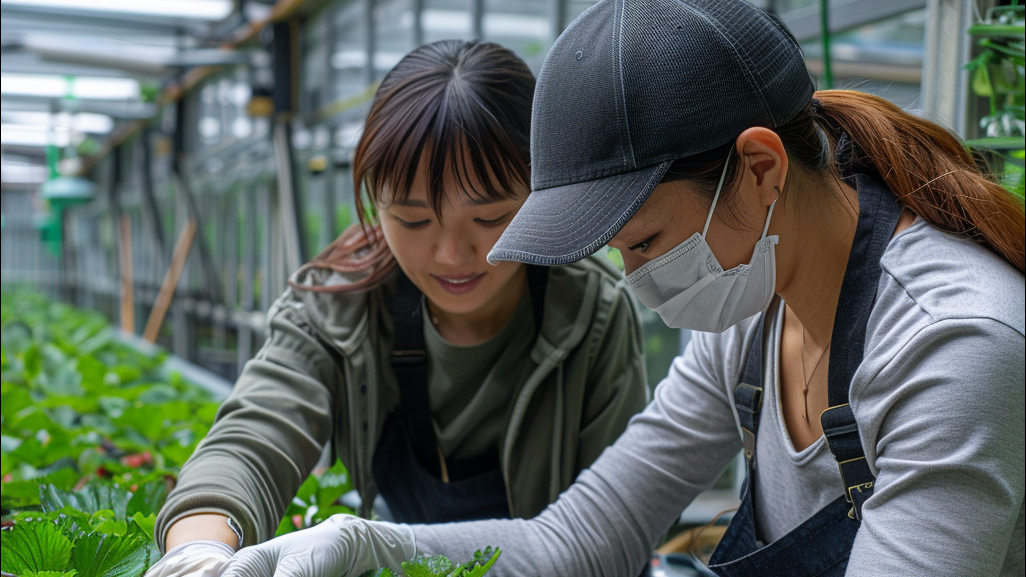發(fā)布:2025-10-17 瀏覽:0
森林資產(chǎn)評估是我國林草產(chǎn)業(yè)發(fā)展和規(guī)模化現(xiàn)代化經(jīng)營的基礎(chǔ)性工作,同時也是盤活森林資源、助力鄉(xiāng)村振興實現(xiàn)的重要途徑油茶林在經(jīng)營過程中具有投入大、周期長效果好、產(chǎn)品用途廣等特點,是村民和集體經(jīng)濟(jì)組織中的重要資產(chǎn)。對油茶林的資產(chǎn)評估,有利于實現(xiàn)對油茶林的有效管理口,健全自然資源資產(chǎn)產(chǎn)權(quán)制度和管理制度中21,對促進(jìn)科學(xué)化及現(xiàn)代化經(jīng)營、村民就業(yè)增收建設(shè)鄉(xiāng)村生態(tài)文明、維護(hù)國家糧油安全9推動綠色發(fā)展具有重要意義。
Forest asset assessment is a fundamental work for the development and large-scale modernization of China's forestry and grassland industry. It is also an important way to activate forest resources and help achieve rural revitalization. Oil tea forests have the characteristics of large investment, long cycle, good results, and wide product uses in the management process, and are important assets for villagers and collective economic organizations. The asset evaluation of oil tea forests is conducive to achieving effective management of oil tea forests, improving the property rights system and management system of natural resource assets, promoting scientific and modern management, increasing employment and income for villagers, building rural ecological civilization, maintaining national grain and oil security, and promoting green development.
作為我國特有的木本食用油料樹種,油茶主要分布于我國南方各省,其中湖南2023年油茶栽培面積、產(chǎn)量和產(chǎn)值均為全國第1為推動油茶等木本糧油產(chǎn)業(yè)可持續(xù)發(fā)展,2006年,國家林業(yè)局印發(fā)《關(guān)于發(fā)展油茶產(chǎn)業(yè)的意見》4-s1;2009年,國家發(fā)展和改革委員會繽太粳舒顙憂遙遛財潤幔盜政部、國家林業(yè)局印發(fā)了《全國油茶產(chǎn)業(yè)發(fā)展規(guī)劃(2009-2020年)》,把油茶產(chǎn)業(yè)發(fā)展列入國家食用油安全保障戰(zhàn)略;2015年,國家林業(yè)局、財政部、國務(wù)院扶貧辦國家開發(fā)銀行聯(lián)合發(fā)布《關(guān)于整合和統(tǒng)籌資金支持貧閑地區(qū)油茶核桃等木本油料產(chǎn)業(yè)發(fā)展的指導(dǎo)意見》,明確了中央財政資金重點支持種苗生產(chǎn)、基地建設(shè)、科技創(chuàng)新和技術(shù)推廣等關(guān)鍵環(huán)節(jié),并加大對油茶種植的補(bǔ)貼力度,新造林補(bǔ)助標(biāo)準(zhǔn)由2015年之前的4500元/hm增至7500元/hm:2022年,國家林業(yè)和草原局印發(fā)《林草產(chǎn)業(yè)發(fā)展規(guī)劃(2021-2025年)》,提出到2025年木本油料種植面積達(dá)到1800萬hm左右,木本食用油年產(chǎn)量達(dá)到250萬:2023年,國家林業(yè)和原局、國家發(fā)展和改革委員會、財政部聯(lián)合印發(fā)《加快油茶產(chǎn)業(yè)發(fā)展三年行動方案(2023-2025年)》,明確2023-2025年完成新增油茶種植127.8萬hm'、改造低產(chǎn)林85.1萬hm,確保到2025年全國油茶種植面積達(dá)到60鉤ㄉ埋萬hm以上、茶油產(chǎn)能達(dá)到200萬t此外,2023年中央一號文件指出,要抓緊抓好糧食和重要農(nóng)產(chǎn)品穩(wěn)產(chǎn)保供,支持木本油料發(fā)展,實施加快油茶產(chǎn)業(yè)發(fā)展三年行動落實油茶擴(kuò)種和低產(chǎn)低效林改造任務(wù)2024年中央一號文件再次提出,要擴(kuò)大油菜面積,支持發(fā)展油茶等特色油料!
As a unique woody edible oil tree species in China, Camellia oleifera is mainly distributed in various provinces in southern China. In 2023, Hunan Province ranked first in the cultivation area, yield, and output value of Camellia oleifera in China. In order to promote the sustainable development of woody grain and oil industries such as Camellia oleifera, in 2006, the National Forestry Administration issued the "Opinions on the Development of Camellia oleifera Industry" (4-s1). In 2009, the National Development and Reform Commission and the National Forestry Administration issued the "National Camellia oleifera Industry Development Plan (2009-2010)", which included the development of the Camellia oleifera industry in the national edible oil safety guarantee strategy; In 2015, the State Forestry Administration, the Ministry of Finance, the State Council Poverty Alleviation Office, and the National Development Bank jointly issued the "Guiding Opinions on Integrating and Coordinating Funds to Support the Development of Woody Oil Industry such as Camellia oleifera and Walnut in Poor and Idle Areas", which clarified the key links of central financial support for seed production, base construction, scientific and technological innovation, and technology promotion, and increased subsidies for Camellia oleifera planting. The new afforestation subsidy standard increased from 4500 yuan/hm before 2015 to 7500 yuan/hm: In 2022, the State Forestry and Grassland Administration issued the "Forest and Grassland Industry Development Plan (2021-2025)", proposing that the woody oil planting area should reach 18 million hm by 2025 Around, the annual output of woody edible oil will reach 2.5 million. In 2023, the State Forestry and the former Bureau, the National Development and Reform Commission and the Ministry of Finance jointly issued the Three Year Action Plan for Accelerating the Development of the Camellia oleifera Industry (2023-2025), which specifies that 1.278 million hectares of new Camellia oleifera will be planted and 851000 hectares of low yield forests will be transformed in 2023-2025, so as to ensure that by 2025, the planting area of Camellia oleifera will reach more than 60 million hectares, and the tea oil production capacity will reach 2 million tons. In addition, the No. 1 central document of the Central Committee pointed out that we should pay close attention to ensuring the stable production and supply of grain and important agricultural products, support the development of woody oil plants, and accelerate the oil tea industry. The three-year development action is to implement the task of camellia oleifera seed expansion and transformation of low yield and low efficiency forests. In 2024, the No. 1 central document of the Central Government again proposed to expand the area of rape and support the development of camellia oleifera and other characteristic oils!
油茶林生長特性、經(jīng)營措施及資產(chǎn)價值與一般用材林不同,不能照搬用材林林木資產(chǎn)評估方法,而應(yīng)根據(jù)油茶林的特征采用科學(xué)的相應(yīng)評估方法進(jìn)行評估。本文將根據(jù)不同的立地條件、經(jīng)營水平、品種及特性年輅摯序濤鋱親碭跬個N閻西鮎b婺等對油茶林評估方法進(jìn)行操討,并提出突出油茶林年齡價值的綜合評估法,以助力餉鴝濼躁襝宅孑悱漚焱茶構(gòu)鎢擁林經(jīng)營模式創(chuàng)新,吸引更多社會資本投入油茶產(chǎn)業(yè)建設(shè)[9
The growth characteristics, management measures, and asset value of oil tea forests are different from those of general timber forests. Therefore, the evaluation methods for timber forest assets cannot be simply copied. Instead, scientific and corresponding evaluation methods should be adopted based on the characteristics of oil tea forests for evaluation. This article will discuss the evaluation methods of Camellia oleifera forests based on different site conditions, management levels, varieties, and characteristics, and propose a comprehensive evaluation method that highlights the age value of Camellia oleifera forests, in order to assist in the innovation of management models for the construction of the Camellia oleifera industry and attract more social capital investment
1.油茶林經(jīng)營概況及評估需求
1. Overview and evaluation needs of oil tea forest management
我國是世界油茶的集中產(chǎn)地,栽培歷史悠久。最適宜栽培區(qū)包括湖南、江西等8省(區(qū)),栽培區(qū)海拔一般在800m以下,其中500m以下土層深厚肥沃的丘崗山地生長最好。油茶樹壽命長達(dá)百年,適應(yīng)性抗逆性強(qiáng)作為一種常綠闊葉樹種,不僅能綠化國土改良土壤,同時也具有較好的經(jīng)濟(jì)效益,可增加農(nóng)民收人。采用油茶良種按照油茶豐產(chǎn)林栽培技術(shù)造林,3~4年后開花結(jié)果,7~8年鮮果產(chǎn)量可達(dá)1500kg/hm,10年后進(jìn)人盛果期(可持續(xù)60年以上),可產(chǎn)鮮果7讞碴碗子5鎪お聡劾0鄢k燁鰷剪g/hm'以上。受林權(quán)(含所有權(quán)、經(jīng)營權(quán)及承包權(quán))和傳統(tǒng)經(jīng)營思想影響,油茶目前主要有5種經(jīng)營形式,即村組集體經(jīng)營(原有老油茶林)、村民自主經(jīng)營、大戶承包經(jīng)營、合作社經(jīng)營和公司承包經(jīng)營。近年來油茶產(chǎn)業(yè)發(fā)展較快,新造油茶林占現(xiàn)有油茶林面積的40%以上,受經(jīng)營水平和近年來早災(zāi)等極端天氣的影響,產(chǎn)量極不穩(wěn)定,鮮果產(chǎn)量大多維持在750~1500kg/hm
China is a concentrated producer of oil tea in the world, with a long history of cultivation. The most suitable cultivation areas include 8 provinces (regions) such as Hunan and Jiangxi. The altitude of the cultivation area is generally below 800m, with the best growth occurring in hilly and mountainous areas with deep and fertile soil layers below 500m. Camellia oleifera has a lifespan of up to a hundred years and strong adaptability and stress resistance. As an evergreen broad-leaved tree species, it can not only green the land and improve the soil, but also have good economic benefits and increase farmers' income. Using high-quality Camellia oleifera seeds and following the cultivation techniques of Camellia oleifera high-yield forests, afforestation can result in flowering and fruiting after 3-4 years, with a fresh fruit yield of up to 1500kg/hm in 7-8 years. After 10 years, it enters the peak fruiting period (which can last for more than 60 years) and can produce 7 pieces of fresh fruit, 5 pieces of rice, and over 0 grams per hour. Influenced by forest rights (including ownership, management, and contracting rights) and traditional management ideas, there are currently five main forms of operation for oil tea, namely village collective operation (formerly old oil tea forests), village self operation, large-scale contracted operation, cooperative operation, and company contracted operation. In recent years, the oil tea industry has developed rapidly, with new oil tea forests accounting for more than 40% of the existing oil tea forest area. Due to the impact of management level and extreme weather conditions such as early disasters in recent years, the yield is extremely unstable, and the fresh fruit yield is mostly maintained at 750-1500kg/hm
油茶營造林投入大、周期長、效益低同嫀郵蜴鎗時厖搓嬋在受?排地條件、品種、經(jīng)營水平、自然災(zāi)害、加工方法及市場等因素影響,產(chǎn)量極不穩(wěn)定!0,導(dǎo)致部分油茶林經(jīng)營者失去信心迫切需要財政投入或融資合作經(jīng)營。因此油茶林資產(chǎn)評估應(yīng)運(yùn)而生,而對油茶林資產(chǎn)評估需求則體現(xiàn)以下幾方面:一是現(xiàn)代化油茶產(chǎn)業(yè)體系發(fā)展的需求!1;二是規(guī)模經(jīng)營的需求,如一些公司投資油茶產(chǎn)業(yè),謀求做大做強(qiáng):三是融資發(fā)展需求,如貸款、擴(kuò)股等:四是林權(quán)糾紛調(diào)處的需求;五是林地征占用補(bǔ)償及二次流轉(zhuǎn)等需求。
Is the afforestation in the oil tea plantation affected by the high investment, long cycle, and low efficiency compared to the traditional Chinese medicine industry? The output is extremely unstable due to factors such as land conditions, varieties, management level, natural disasters, processing methods, and market! 0, causing some oil tea forest operators to lose confidence and urgently need financial investment or financing cooperation for operation. Therefore, the evaluation of oil tea forest assets has emerged, and the demand for oil tea forest asset evaluation is reflected in the following aspects: firstly, the demand for the development of a modern oil tea industry system! 1. The second is the demand for scale operation, such as some companies investing in the oil tea industry to seek growth and strength; the third is the demand for financing and development, such as loans, stock expansion, etc.; the fourth is the demand for resolving forest rights disputes; The fifth is the demand for compensation for forest land acquisition and occupation, as well as secondary circulation.
2.油茶林資產(chǎn)評估常規(guī)方法
2. Conventional methods for asset evaluation of oil tea forests
油茶林的資產(chǎn)評估是指專業(yè)評估人員依據(jù)林業(yè)法律法規(guī)和林業(yè)行業(yè)評估標(biāo)準(zhǔn),對擬評估的油茶林資源資產(chǎn)進(jìn)行現(xiàn)場調(diào)查、林分測量、統(tǒng)計匯總、價值估算、數(shù)據(jù)分析并發(fā)表專業(yè)意見的具體行為和工作過程1。油茶林資產(chǎn)評估是對其產(chǎn)品價格、生產(chǎn)經(jīng)營成本經(jīng)濟(jì)壽命、年度產(chǎn)量和資金折現(xiàn)率等經(jīng)濟(jì)指標(biāo)的評估,目的是實現(xiàn)對油茶林資產(chǎn)的有效利用,提升油茶林資產(chǎn)價值口。現(xiàn)有對油茶林資產(chǎn)的評估主要采用重置成本法、收益現(xiàn)值法、收獲現(xiàn)值法、市場成交價比較法、剩余鈄抑抱扺顯價緘謾皺忖掛?感螗匏曖饈癰雞等5種方法:此外,湖南根據(jù)實際提出了資產(chǎn)評估標(biāo)尺值法。
The asset evaluation of oil tea forests refers to the specific behavior and work process of professional evaluators conducting on-site investigations, forest stand measurements, statistical summaries, value estimation, data analysis, and expressing professional opinions on the oil tea forest resource assets to be evaluated based on forestry laws and regulations and forestry industry evaluation standards. Oil tea forest asset evaluation is the assessment of economic indicators such as product prices, production and operation costs, economic life, annual output, and capital discount rate, with the aim of achieving effective utilization of oil tea forest assets and enhancing their value. The current evaluation of oil tea forest assets mainly adopts the reset cost method, present value of income method, present value of harvest method, market transaction price comparison method, and residual hedging method? There are five methods for evaluating assets, including the use of sensitive, warm, and delicious foods. In addition, Hunan has proposed the asset valuation standard value method based on actual conditions.
1)重置成本法。該方法是按評估基準(zhǔn)日的工價及作業(yè)水平重新造林及撫育管理一塊與被評估的油茶林相同林分所需要的營造林成本費(fèi)用嗎,可分為產(chǎn)前期油茶林(1~8年)和篢初產(chǎn)期油茶林評估(9~15年)。其對每年投入與產(chǎn)出的數(shù)據(jù)要求準(zhǔn)確詳細(xì),并按當(dāng)錈盡飲圓棵年闘)未嗵價蓍麃侄計算。該方法實際評估應(yīng)用較多便于操作、準(zhǔn)確性高,適合新造油茶林。
1) Reset cost method. Is this method based on the evaluation benchmark date's labor price and operational level for reforestation and nurturing management of a forest branch that is the same as the evaluated oil tea forest? The afforestation cost can be divided into pre production oil tea forest (1-8 years) and early production oil tea forest evaluation (9-15 years). It requires accurate and detailed data on annual inputs and outputs, and calculates them based on the annual income of the whole plant. This method has many practical applications, is easy to operate, and has high accuracy, making it suitable for new oil tea plantations.
2)收益現(xiàn)值法。該方法適合處于8年以上的盛產(chǎn)期油茶林資產(chǎn)評估,其優(yōu)點是數(shù)據(jù)翔實、準(zhǔn)確直觀,不足是檔案數(shù)據(jù)資料難收集。該方法要求油茶林各年度收人與產(chǎn)出數(shù)據(jù)完整,相對而言其評估結(jié)果更準(zhǔn)確可靠。
2) Present value of earnings method. This method is suitable for asset evaluation of oil tea forests that have been in high production for more than 8 years. Its advantages are that the data is detailed, accurate, and intuitive, but its disadvantage is that it is difficult to collect archival data. This method requires complete annual income and output data for the Camellia oleifera forest, making its evaluation results relatively more accurate and reliable.
3)收獲現(xiàn)值法。該方法能夠較為全面地反映油茶林的經(jīng)濟(jì)價值,適合盛產(chǎn)期油茶林,油茶林盛產(chǎn)期長達(dá)40~60年,期間油茶林鮮果產(chǎn)量高且相對穩(wěn)定,林分抗逆性強(qiáng)、經(jīng)濟(jì)價值大、收益多。該方法要求各年度收人數(shù)據(jù)準(zhǔn)確,評估結(jié)果直觀;但計算比較復(fù)雜數(shù)據(jù)獲取困難、市場價格影響波動大。
3) Harvest present value method. This method can comprehensively reflect the economic value of oil tea forests and is suitable for oil tea forests during their peak production period, which can last for 40-60 years. During this period, oil tea forests have high and relatively stable fresh fruit yields, strong forest resistance, high economic value, and high returns. This method requires accurate annual revenue data and intuitive evaluation results; But the calculations are complex, data acquisition is difficult, and market prices fluctuate greatly.
4)市場成交價比較法。該方法是將同年齡同立地條件的油茶林的現(xiàn)行市場成交價作為比較基礎(chǔ),依據(jù)該價格對擬評估的油茶林資源資產(chǎn)進(jìn)行評估的方法。同一個評估對象需要選取3個以上案例,并就代表性、合法性、適宜性、準(zhǔn)確性等方面進(jìn)行分析,可采用算術(shù)平均法、加權(quán)平均法、綜合分析法等方法計算,并在評估報告中說明采用的方法和理由。該方法適合所有油茶林評估,要求市場交易活躍、案例多,缺點是很難找到已成交的多個案例。
4) Market transaction price comparison method. This method uses the current market transaction price of oil tea forests of the same age and site conditions as a comparative basis, and evaluates the oil tea forest resource assets to be evaluated based on this price. The same evaluation object needs to select three or more cases and analyze their representativeness, legality, suitability, accuracy, and other aspects. Methods such as arithmetic mean, weighted mean, and comprehensive analysis can be used for calculation, and the methods and reasons used should be explained in the evaluation report. This method is suitable for evaluating all oil tea forests, requiring active market transactions and multiple cases. The disadvantage is that it is difficult to find multiple cases that have already been completed.
5)剩余價值法。該方法適合盛產(chǎn)期后的老油茶林評估。油茶林隨著年齡增長、經(jīng)營不善進(jìn)人衰產(chǎn)期后,油茶林的產(chǎn)量和經(jīng)濟(jì)效益逐年下降,形成了投人大于產(chǎn)出的虧損局面。但油茶樹壽命長,隨著年齡增加,生態(tài)效益增強(qiáng),可通過移栽、嫁接及生物質(zhì)燃料原料采伐利用等增加油茶古樹價值。其價值可采用剩余價值法根據(jù)實際應(yīng)用情況評估,缺點是數(shù)據(jù)獲取困難、油茶樹價值開發(fā)不確定。
5) Surplus value method. This method is suitable for evaluating old oil tea forests after the peak production period. With the aging and poor management of oil tea forests, their output and economic benefits have been declining year by year, resulting in a loss situation where input exceeds output. But oil tea trees have a long lifespan, and as they age, their ecological benefits increase. The value of oil tea trees can be increased through transplanting, grafting, and harvesting of biomass fuel materials. Its value can be evaluated using the residual value method based on actual application situations, but the disadvantages are difficulty in obtaining data and uncertainty in developing the value of Camellia oleifera trees.
6)評估標(biāo)尺值法。依據(jù)《森林資源資產(chǎn)評估技術(shù)規(guī)范》等相關(guān)要求,對建設(shè)期、初產(chǎn)期油茶林資產(chǎn)采用重置成本法進(jìn)行評估對盛產(chǎn)期油茶林采用收獲現(xiàn)值法分別計算委估油茶林資產(chǎn)的評估值,得出不同類型、不同年齡的油茶林單位面積資產(chǎn)評估標(biāo)尺值。油茶分區(qū)主要按照單位面積前期投人、墾復(fù)造林標(biāo)準(zhǔn)和立地條件等不同分為一類區(qū)和二類區(qū),如湖南長株潭為一類區(qū)、其他地區(qū)為二類區(qū)。一類區(qū)域油茶林的單位面積資產(chǎn)折算系數(shù)為1,二類區(qū)域油茶林的單位面積資產(chǎn)折算系數(shù)為0.85。估值人員可依據(jù)油茶林品質(zhì)、密度、品種與平均投入等情況對評估結(jié)果適當(dāng)進(jìn)行上下浮動調(diào)整,初產(chǎn)期的新造林和建設(shè)期的低改林上下調(diào)整幅度不超過5%盛產(chǎn)期的油茶林上下調(diào)整幅度不超過10%即調(diào)整系數(shù)分別為0.95或0.90。委估油茶林評估值等于面積、該年齡評估標(biāo)尺值、調(diào)整系數(shù)及折算系數(shù)的乘積。該方法適合所有油茶林的評估,實用性強(qiáng)、操作容易,湖南油茶林評估大多采用此方法:缺點是評估值與實際值相比偏大,結(jié)果依賴性與數(shù)據(jù)滯后性靈活性不足,且適應(yīng)性較差。
6) Evaluate the ruler value method. According to the Technical Specifications for Forest Resource Asset Evaluation and other relevant requirements, the reset cost method is used to evaluate the assets of oil tea forests during the construction and initial production periods. The present value of harvest method is used to calculate the evaluation value of the oil tea forest assets during the abundant production period, and the evaluation scale values of oil tea forest assets per unit area for different types and ages are obtained. Oil tea zoning is mainly divided into Class I and Class II zones based on different standards such as pre investment per unit area, afforestation standards, and site conditions. For example, Changsha Zhuzhou Xiangtan in Hunan Province is classified as Class I zone, while other areas are classified as Class II zone. The conversion coefficient of assets per unit area for oil tea forests in Class I regions is 1, and the conversion coefficient of assets per unit area for oil tea forests in Class II regions is 0.85. Valuation personnel can adjust the evaluation results appropriately based on factors such as the quality, density, variety, and average input of the oil tea forest. The adjustment range for newly planted forests in the initial production period and low converted forests in the construction period should not exceed 5%, and the adjustment range for oil tea forests in the high-yield period should not exceed 10%, with adjustment coefficients of 0.95 or 0.90, respectively. The assessed value of the oil tea forest is equal to the product of the area, the age assessment scale value, the adjustment coefficient, and the conversion coefficient. This method is suitable for the evaluation of all Camellia oleifera forests, with strong practicality and easy operation. This method is mostly used for the evaluation of Camellia oleifera forests in Hunan. The disadvantage is that the evaluation value is relatively large compared to the actual value, the result dependence and data lag flexibility are insufficient, and the adaptability is poor.
3.油茶林資產(chǎn)綜合評估法
3. Comprehensive evaluation method for oil tea forest assets
相對于其他的用材林,油茶林的資產(chǎn)評估因其不同的生長特性和經(jīng)營措施、培育目標(biāo),應(yīng)有不同的資產(chǎn)評估方法。選擇對應(yīng)的資產(chǎn)評估方法,有利于提升評估準(zhǔn)確性。由于缺乏油茶產(chǎn)量數(shù)據(jù),目前的評估大多采用本地高產(chǎn)油茶林產(chǎn)量數(shù)據(jù)或理論設(shè)計產(chǎn)量數(shù)據(jù),評估結(jié)果可信度低,與實際產(chǎn)量存在較大差異。油茶特性包括品種多、地域廣、大小年明顯、產(chǎn)量不穩(wěn)定等,特別是筆者自2008年開展油茶林評估實踐及常寧市油茶測產(chǎn)工作以來發(fā)現(xiàn),新造油茶林茶果產(chǎn)量隨著年齡的增長而增加。根據(jù)這一規(guī)律,本文提出了綜合評估法,即按經(jīng)營期分段計算評估值的方法。
Compared to other timber forests, the asset evaluation of oil tea forests should have different methods due to their different growth characteristics, management measures, and cultivation goals. Choosing the corresponding asset evaluation method is beneficial for improving the accuracy of the evaluation. Due to the lack of oil tea production data, most current evaluations use local high-yield oil tea forest production data or theoretical design production data, resulting in low credibility of evaluation results and significant differences from actual production. The characteristics of Camellia oleifera include a wide variety of varieties, a wide geographical area, significant differences in size and year, and unstable yield. In particular, since the author conducted the evaluation practice of Camellia oleifera forests and the production measurement of Camellia oleifera in Changning City in 2008, it has been found that the tea fruit yield of newly constructed Camellia oleifera forests increases with age. Based on this law, this article proposes a comprehensive evaluation method, which calculates the evaluation value in segments according to the operating period.
1)劃分生長周期和時期。對油茶林依據(jù)其生長、生產(chǎn)和經(jīng)營特點的不同來劃分生長周期。新造油茶豐產(chǎn)林生長周期一般分4個時期,即建設(shè)期(未成林造林期,通常1~3年)、初產(chǎn)期(4~7年)、盛產(chǎn)期(8~60年)、衰產(chǎn)期(60年以后);老油茶林可分為常規(guī)油茶林和低改油茶林。改造后的油茶林生長周期分為2個時期,即建設(shè)期(進(jìn)行低改后1-4年的油茶林)、盛產(chǎn)期(進(jìn)行低改后5-20年內(nèi)的油茶林)。針對擬估油茶林年齡根據(jù)油茶林年齡、類型區(qū)分不同的生長周期如擬估對象為20年的油茶林,可區(qū)分為3個時期,即建設(shè)期3年、初產(chǎn)期4年、盛產(chǎn)期13年。
1) Divide growth cycles and periods. Divide the growth cycle of oil tea forests based on their different growth, production, and management characteristics. The growth cycle of newly developed oil tea high-yield forests is generally divided into four stages, namely the construction period (pre afforestation period, usually 1-3 years), the initial production period (4-7 years), the abundant production period (8-60 years), and the decline period (after 60 years); Old oil tea forests can be divided into conventional oil tea forests and low modified oil tea forests. The growth cycle of the renovated Camellia oleifera forest is divided into two periods, namely the construction period (1-4 years after the transformation) and the peak production period (5-20 years after the transformation). According to the age and type of the oil tea forest to be estimated, different growth cycles can be distinguished. For example, if the estimated object is a 20-year-old oil tea forest, it can be divided into three periods: a construction period of 3 years, an initial production period of 4 years, and a peak production period of 13 years.
2)計算各生長周期時期末單位面積的評估值。選定各時期末的評估方法,計算擬估油茶林各時期末的評估值,如建設(shè)期、初產(chǎn)期可選用重置成本法或評估標(biāo)尺值法計算盛產(chǎn)期可采用收獲現(xiàn)值法等。以周期末日期為評估基準(zhǔn)日,即對應(yīng)時期末年的12月31日為該生長時期末評估基準(zhǔn)日。
2) Calculate the evaluation value per unit area at the end of each growth cycle period. Select the evaluation method at the end of each period and calculate the evaluation value of the proposed Camellia oleifera forest at the end of each period. For example, during the construction period and initial production period, the reset cost method or the evaluation scale value method can be used to calculate the peak production period, and the present value of harvest method can be used. Using the end date of the cycle as the evaluation reference date, that is, December 31st at the end of the corresponding period as the evaluation reference date for the end of the growth period.
3)計算生長周期各生長時期權(quán)重值。在評估中把油茶林齡列入評估權(quán)重指標(biāo),以生長周期各時期年齡數(shù)值除以擬估油茶林年齡作為權(quán)重值。例如,擬評估油茶林齡20年其建設(shè)期3年,則權(quán)重值為3/20:初產(chǎn)期4年,權(quán)重值為4/20;盛產(chǎn)期13年,權(quán)重值13/20
3) Calculate the weight values of each growth period in the growth cycle. In the evaluation, the age of the Camellia oleifera forest is included as a weight indicator, and the weight value is calculated by dividing the age values of each stage of the growth cycle by the estimated age of the Camellia oleifera forest. For example, if the age of the oil tea forest is 20 years and its construction period is 3 years, the weight value is 3/20; if the initial production period is 4 years, the weight value is 4/20; The peak production period is 13 years, with a weight value of 13/20
4)計算擬估油茶林評估值。依據(jù)生長周期各時期末計算的單位面積評估值,加權(quán)計算得到評估基準(zhǔn)日單位面積的評估值,再計算擬評估面積評估值,見公式
4) Calculate the estimated value of the oil tea forest. Based on the unit area evaluation values calculated at the end of each growth cycle period, the weighted calculation is used to obtain the evaluation value of the unit area on the evaluation reference date, and then the evaluation value of the proposed evaluation area is calculated, as shown in the formula
對市場進(jìn)行調(diào)查并分析論證中4,以獲得符合客觀實際的評估結(jié)果9。同時,茶油產(chǎn)品及肥料等農(nóng)資產(chǎn)品市場價格波動大,受勞動力市場價格等因素的影響,油茶林評估有待進(jìn)一步研究。(1):
Conduct market research and analysis to obtain objective and realistic evaluation results. At the same time, the market prices of tea oil products and agricultural inputs such as fertilizers fluctuate greatly, and are influenced by factors such as labor market prices. Therefore, further research is needed for the evaluation of oil tea forests. (1):
式中,E為擬估油茶林評估值,X為擬評估油茶林資產(chǎn)的面積(單位為hm'),為生長周期中第:個時期末評估值,i為生長時期,)為生長周期中時期個數(shù),d;為生長周期中第個時期年數(shù),"為林分年齡。采用單位面積資產(chǎn)評估標(biāo)尺值法評估20年的油茶林評估值為90877.5元/hm':采用重置成本法計算,20年的油茶林評估值為79650元/hm:而采用綜合評估法計算,評估值為86324.32元/hm。3種評估方法的平均評估值為85617.3元/hm’,與綜合評估法測算的評估值更接近。
In the formula, E is the estimated value of the oil tea forest, X is the area of the oil tea forest assets to be evaluated (unit: hm '), is the evaluation value at the end of the th period in the growth cycle, i is the growth period,) is the number of periods in the growth cycle, d; is the number of years in the th period of the growth cycle, "is the age of the forest. The evaluation value of the oil tea forest for 20 years using the unit area asset evaluation scale method is 90877.5 yuan/hm', calculated using the reset cost method, the evaluation value of the oil tea forest for 20 years is 79650 yuan/hm, and calculated using the comprehensive evaluation method, the evaluation value is 86324.32 yuan/hm. The average evaluation value of the three evaluation methods is 856.36 yuan/hm. 17.3 yuan/hm ', which is closer to the evaluation value calculated by the comprehensive evaluation method.
綜合評估法按生長周期分時期計算評估值,適合于所有油茶林評估,并充分考慮了油茶林特性和規(guī)律,體現(xiàn)了油茶林年齡價值規(guī)律,提升了油茶林評估水準(zhǔn)。與其他評估方法不同之處在于:一是體現(xiàn)了油茶林隨生長年齡增加而產(chǎn)量遞增規(guī)律,二是打破了傳統(tǒng)一片林用單一評估方法評估的做法。綜合評估法優(yōu)勢在于接近實際值,交易雙方易于接受和認(rèn)可;其不足表現(xiàn)在資料收集要完整年齡應(yīng)準(zhǔn)確,計算較復(fù)雜。
The comprehensive evaluation method calculates evaluation values in stages according to the growth cycle, which is suitable for evaluating all oil tea forests and fully considers the characteristics and laws of oil tea forests. It reflects the age value law of oil tea forests and improves the evaluation level of oil tea forests. The difference from other evaluation methods lies in: firstly, it reflects the law of increasing yield of Camellia oleifera forest with increasing growth age; secondly, it breaks the traditional practice of evaluating a single forest using a single evaluation method. The advantage of the comprehensive evaluation method lies in its proximity to actual values, which are easily accepted and recognized by both parties in the transaction; Its shortcomings are manifested in the need for complete data collection, accurate age, and complex calculations.
4.結(jié)束語
4. Conclusion
油茶林年齡是影響評估值的重要因素常常被忽視。本文將林齡列入評估值權(quán)重計算樞蚩子笑,更ト符合油茶林生長、經(jīng)營及價值增長規(guī)律。油茶林資產(chǎn)評估值是其油茶鮮果價格、年度鮮皚握果產(chǎn)量、生產(chǎn)經(jīng)營投入成本、資金折現(xiàn)利率和經(jīng)濟(jì)壽命期等綜合作用的結(jié)果。在技術(shù)參數(shù)確定時,要結(jié)合油茶林的實際情況.
The age of oil tea plantations is often overlooked as an important factor affecting the evaluation value. This article includes Lin Ling in the weight calculation of the evaluation value, which is more in line with the growth, management, and value growth laws of oil tea forests. The asset evaluation value of oil tea forest is the result of the comprehensive effects of its oil tea fresh fruit price, annual fresh fruit yield, production and operation input cost, discounted interest rate of funds, and economic life cycle. When determining technical parameters, it is necessary to take into account the actual situation of the oil tea forest
本文由 林業(yè)資產(chǎn)價格評估 友情奉獻(xiàn).更多有關(guān)的知識請點擊 http://www.kkpcgoldfoam.com/ 真誠的態(tài)度.為您提供為全面的服務(wù).更多有關(guān)的知識我們將會陸續(xù)向大家奉獻(xiàn).敬請期待.
This article is dedicated to the evaluation of forestry asset prices For more related knowledge, please click http://www.kkpcgoldfoam.com/ Sincere attitude To provide you with comprehensive services We will gradually contribute more relevant knowledge to everyone Coming soon.


















